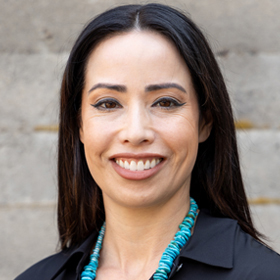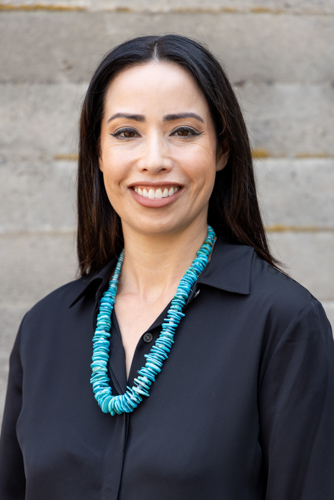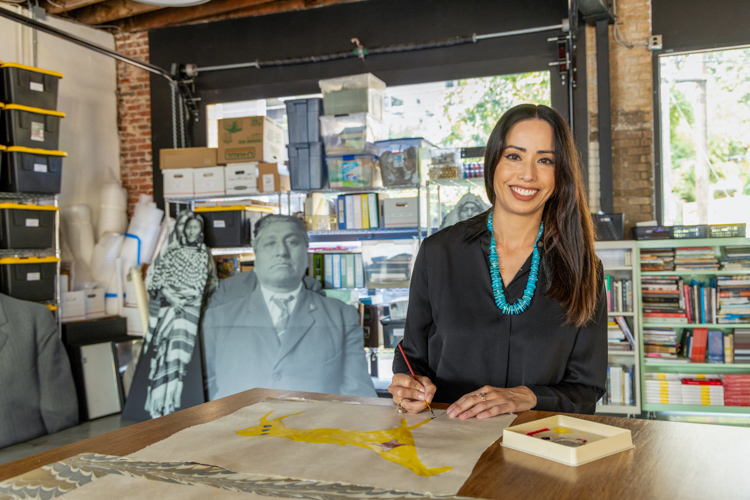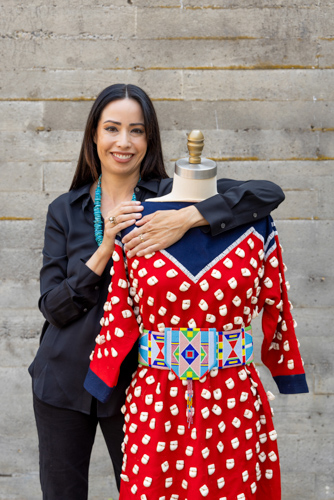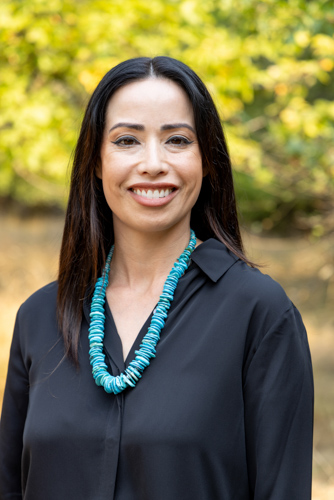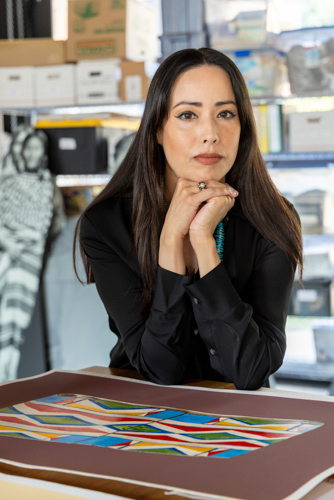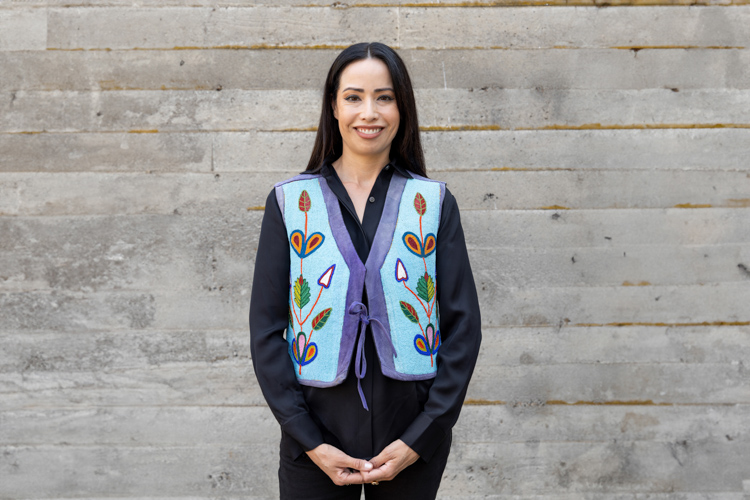About Wendy's Work
Wendy Red Star is a visual artist engaging with archival materials in works that challenge colonial historical narratives. Across her multidisciplinary practice, Red Star references and reworks objects from museum collections, government archives, and her own family’s history. She highlights the resilience and strength of her Apsáalooke/Crow heritage, offering a grounded perspective that challenges misconceptions and oversimplified portrayals.
In an early series of self-portraits entitled Four Seasons (2006), Red Star stages four elaborate tableaux representing each of the four seasons. The obviously artificial backdrops satirize the dioramas typical of natural history museums. They include plastic flowers, cardboard and inflatable animals, and Styrofoam packing material. Red Star wears an elk-tooth dress, a traditional garment of the Apsáalooke Nation, and gazes directly at the camera, reminding viewers that Native Americans do not only exist in the past. Red Star engages more directly with archival materials in her 1880 Crow Peace Delegation series (2014). The series comprises digitally manipulated portrait photographs of Apsáalooke leaders that were originally taken by the Bureau of American Ethnology for an anthropological study. Red Star annotated the original images with red pen, outlining meaningful elements in the leaders’ attire and adding explanatory text. In this way, she unpacks for a contemporary audience the rich symbolism and expressions of the leaders’ agency.
More recently, Red Star extended her practice to site-specific installations that interrogate the histories of particular places. For a 2021 project at the Joslyn Art Museum in Omaha, Nebraska, she transformed the gallery space into a replica of a world’s fair exposition booth for displaying produce. In place of fruits and vegetables, Red Star arranged hundreds of cutouts of Native American figures taken from historical photographic portraits of the attendees of the 1898 Indian Congress. The Congress took place in Omaha alongside the Trans-Mississippi and International Exposition and was intended to showcase the daily lives of Native Americans as part of the Exposition’s broader celebration of America’s westward expansion. Red Star’s installation puts present-day viewers in the position of visitors to the Exposition, who viewed attendees to the Congress as objects on display, while at the same time she reasserts the dignity of the Native participants. Through her witty and subversive use of photography and installation, Red Star exposes audiences to materials typically only available to researchers and recovers details of histories that archives either cannot or purposefully do not convey.







